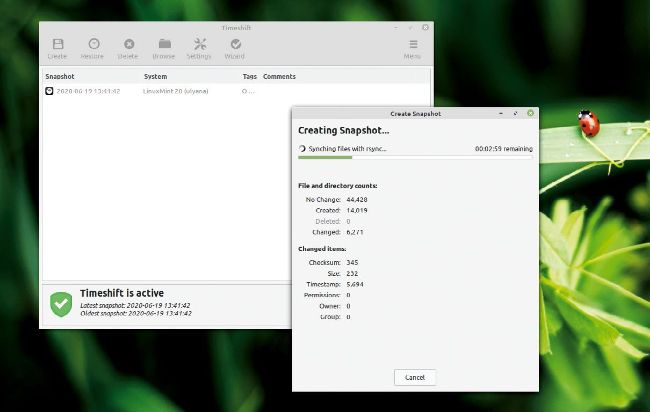BACK UP LIKE CLOCKWORK!
Jonni Bidwell has a plan - several plans, in fact - to keep his ever-growing repository of data ticking over nicely.
Jonni Bidwell
There are two types of people in this world: those who back up their files and those who have never experienced data loss. In a world that’s becoming increasingly cloudy, backing up files might seem like an old-fashioned sort of a habit. Much like wearing a watch or writing cheques
(…that your body can’t cash? - Ed).
If your Android phone dies (and you opted in to connecting everything to your Google Account) then you can restore your contacts, messages and apps effortlessly on a new device. If you work in a corporate environment, then your IT
team can (with a little more work) probably do a similar thing if your work machine dies. You might lose a few hours’ work (depending on when and where you last saved) or some tiny configuration details, but starting from a base image applications can be re-installed and your user account connected in a matter of minutes, not days. But if your home PC fails, or even if you accidentally delete some files, recovery can prove much more complicated.
Unless, that is, you have a solid backup regime, which hopefully this feature will inspire. Through automated, incremental backups we’ll aim to make backups less chore-like. We’ll cover snapshots so that your OS can be restored in a few clicks. We’ll look at using multiple drives (RAID) to protect against hardware failure, paving the way for ill-considered jokes about redundancy. We’ll look at the excellent Duplicati tool, which can integrate with cloud storage services as well as a VPS, or indeed a real server, under your control. If you prefer to do things manually, then we’ll also look at the command line program Duplicity, which uses Rsync to send encrypted tar archives to the clouds. And because we like choice (and alliteration) we’ll look at making this easy with the Déjà Dup frontend.
Pre-backup considerations
A quick look at the why, what and where of a strong back-up plan.

Mint’s Timeshift is an excellent and fuss-free way to carry out back ups, but for this outing we have a few more tricks up our voluminous sleeves.
Over the second quarter of 2019, a survey by cloud storage firm Backblaze recorded a 1.8 per cent annualised failure rate over 108,461 hard drives in its service. So extrapolating wildly, we might say, in lay speak, that there’s a 1.8 per cent chance that an ‘average’ disk will fail within a year. Those are enterprise-class drives as well, so the odds are only going to be worse for consumer hardware.
A significant obstacle to having a watertight back-up regime is how disorganised we are with our files in the first place. One upside to the Gnome desktop abolishing the right to store files on the desktop is that it obviates the terrible habit of covering your lovely desktop wallpaper with so many icons and partial file names. It belongs to the same organisational scheme as putting everything on the floor so you known where everything is. If, on the other hand, you keep all your photos (including those from your phone) in one folder, important documents in another, large dataset that can’t be easily replaced on their own drive, and so on, then it’s much easier to put together an efficient backup strategy.
It’s also useful to segregate system and user file backups. In many cases, backing up your operating system is less important than your own data. You can reinstall Linux in five minutes, so it really depends how much manual configuration you’ve done.
Data stored on Dropbox, iCloud, Google Drive or Amazon S3 (or any other cloud storage service you’d care to name) is unlikely to just vanish in the way that data stored locally would if your hard drive goes kaput (as long as you keep paying your bills, of course). Yet these services suffer hard drive (or solid state, tape or Blu-ray) failures all the time. They have their own advanced back-up and replication methods to cope with this (as well as preemptively retiring old hardware). The actual disk you’re accessing could fail as you download a file, yet you might not even notice the delay as a backup volume is transparently spun up.
From an end user point of view, these services offer an invincible hold for their data. Invincible that is, until someone hacks your account or until you accidently delete those files. Then, unless you had your own replication strategy, it’s game over, man.
HOW ORGANISED IS YOUR SETUP? “A significant obstacle to having a watertight back-up regime is how disorganised we are with our files…”